These days, brands are putting all kinds of work and effort into their marketing strategies, supporting brand awareness, conversions and customer satisfaction with an array of collateral and content. From content marketing efforts to social media campaigns, companies are investing significant marketing spend to attract potential customers. But how can you be sure that your blog, social media and campaign collateral are truly making an impact with your target audience and furthering the success of your brand?
This is where your key performance indicators (KPIs) come into play. However, it’s not just about having your marketing team look at every piece of data from Google Analytics and other platforms — that’s like throwing spaghetti at the wall. It’s crucial to focus on the right KPIs that align with your business goals and digital marketing strategy.
By understanding which marketing metrics you should actually track and pay attention to, you better understand the results of your marketing activities and how you can use these numbers to fine-tune your marketing investment and ultimately support your overall goals and objectives.
First things first: What’s in a KPI?
Before we go any further, let’s take a moment to explain what we mean by KPIs. Key performance indicators can involve a whole host of aspects — there are content marketing KPIs, inbound marketing KPIs, organic search KPIs, customer satisfaction KPIs, brand awareness KPIs, social media KPIs, engagement KPIs and even PPC KPIs … the list goes on and on. Don’t worry, we’ll delve into each of these areas more in just a bit.
In basic terms, KPIs are measurable values related to the efforts made as part of your marketing campaigns and strategy. KPIs should:
- Be meaningful, enabling and supporting decision-making.
- Be material (or measurable. We’re not going for the abstract here.).
- Support decisions for strategic positioning.
- Align with the brand’s strategic direction.
Remember the goals and objectives you created as part of your overall marketing strategy? These (particularly your S.M.A.R.T. goals) can provide a good place to start. Setting clear marketing goals helps you identify the right KPIs to track and ensures that your marketing activities are aligned with your business objectives.
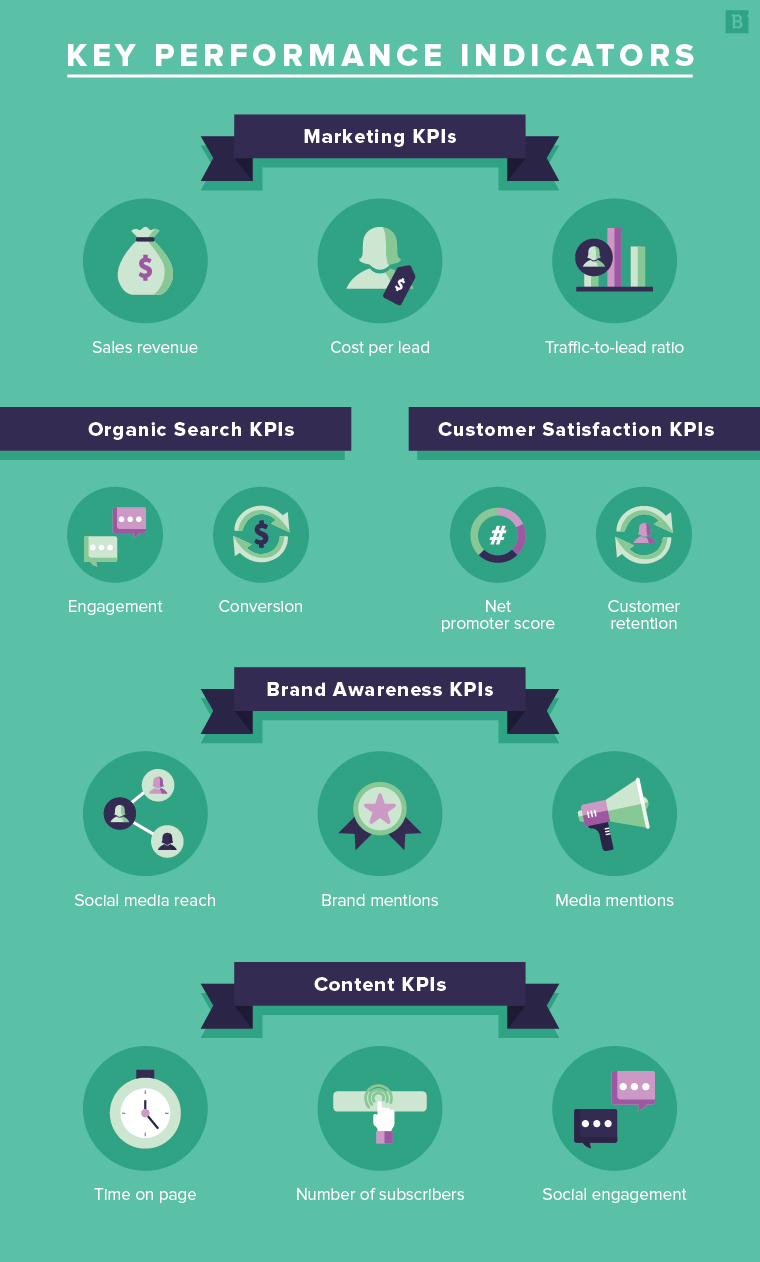
Let’s examine some other critical marketing KPI areas, including a few examples you can take home and leverage for the good of your own brand:
Marketing KPIs
There are a few usual suspects that you can take into account, track and measure here. While they may seem basic, there’s a reason these marketing performance KPIs are staples.
Sales revenue
This isn’t just overall sales but the specific revenue stemming directly from your inbound marketing campaign. You can calculate this KPI by taking a look at your total annual sales and subtracting the total revenue coming in from customers acquired through inbound marketing. Voila! This will tell you exactly how much your inbound marketing has generated for your brand. Understanding this marketing metric helps you assess the success of your marketing investment and guides future marketing spend.

Cost per lead
It’s important to not only view things through the lens of how much you’ve made but also the cost to get you there. This is where your Cost Per Lead (CPL — or CAC [Customer Acquisition Cost] if you’re fancy) KPI comes in, which can show you exactly how much you’re spending in order to acquire new customers. You can look at costs like overhead, tech and software investments and the cost of creative efforts to calculate CPL for inbound marketing; or examine costs related to advertising, distribution, sales and marketing efforts and overhead to calculate outbound marketing CPL.
Assessing your CPL helps you optimize your marketing channels and activities to reduce costs and improve marketing success.
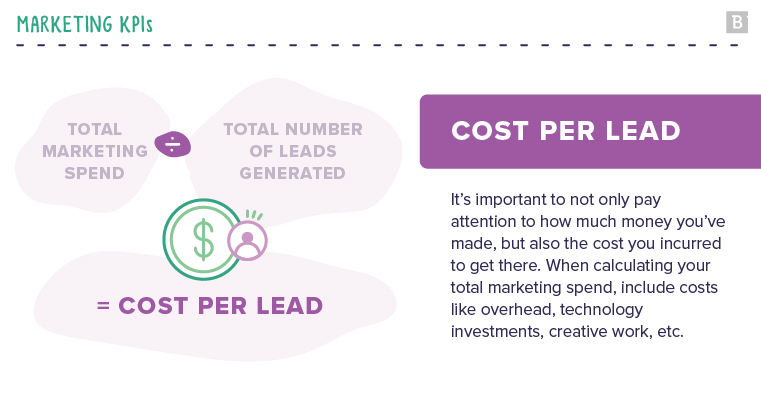
Traffic-to-lead ratio
Comparing the ratio of your website traffic to the number of new leads generated can be particularly telling. If this ratio is low, it could mean that it’s time to revisit your goals and make some changes to support more meaningful conversions. This metric helps you understand the effectiveness of your digital marketing strategy in attracting potential customers and converting them into marketing qualified leads (MQLs).
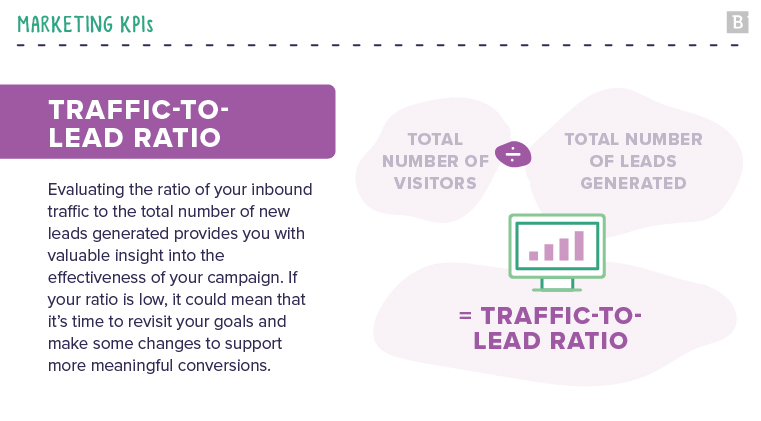
Organic search KPIs
Speaking of traffic, there are a few critical organic search KPIs to take note of. At this point, it’s time to call upon every marketer’s best friend: Google Analytics. As we discussed earlier, though, it’s important to know where to look here, lest you get lost in all the numbers and insights good ol’ GA can provide.
Engagement Metrics
Here, you can look at indicators like time spent on site, number of visits, which pages were visited and the overall bounce rate. Remember to take that last one with a grain of salt though — bounce rate can be misleading, and even Google understands that this number will likely be high, depending on the type of site. For example, consider this: The average bounce rate for blogs sits around 70 to 98 percent.
Analyzing these engagement KPIs provides valuable marketing analytics to understand user behavior on your website and helps optimize your content marketing KPIs.
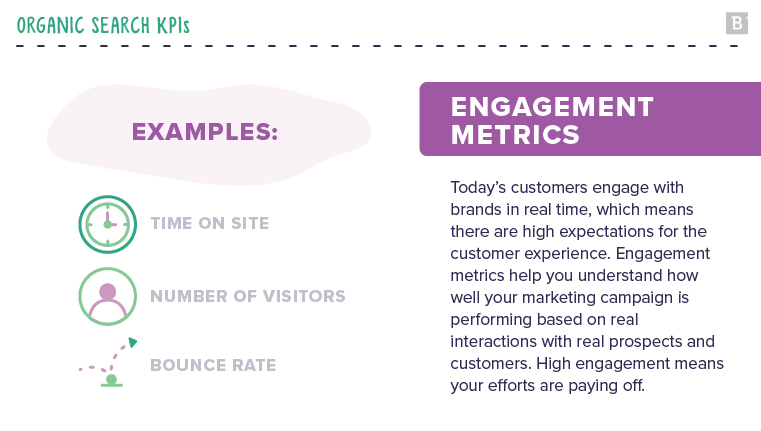
Conversion Rate
This is a biggie, but it can be a bit difficult to track, especially for service providers. Retailers typically set up Goals within Google Analytics to track conversion rates related to account registration, placing items in the shopping cart and completing purchases. Service providers, on the other hand, can measure visits to landing pages, engagement with calls to action and, of course, service purchases.
Monitoring conversion rates helps you evaluate the effectiveness of your marketing channels and digital marketing KPIs, guiding your digital marketing strategy.
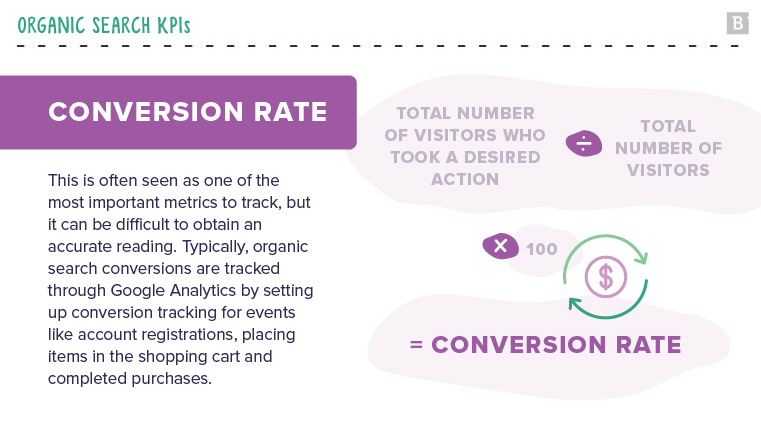
Brand awareness KPIs
Brand awareness is pretty critical — if your target audience isn’t aware of your brand, how will they engage with you? There are a few ways you can measure overall brand awareness, including with KPIs such as:
Social media reach
Take a look at the number of shares your social content is getting on Facebook, Pinterest and LinkedIn, and pay special attention to share stats related to industry influencers. As Content Marketing Institute contributor Sujan Patel pointed out, while X doesn’t currently count this for you, you can leverage tools like Shared Count and Get Social to get a better sense of your reach on social media platforms.
Tracking social media KPIs helps you understand how your content is resonating with your audience and can inform your marketing activities on platforms like Facebook Ads and other social channels.
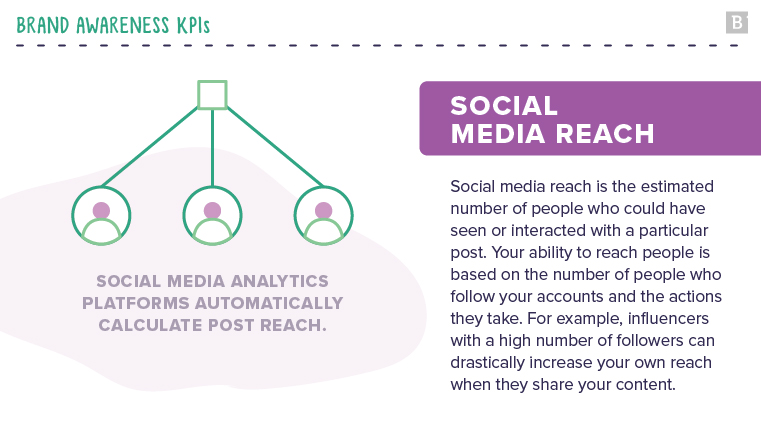
Brand mentions
In the same vein as social reach is brand mentions — the more times your brand is mentioned by customers, influencers and other brands in and outside of your industry, the better. Each mention can help you cultivate and grow your brand awareness, which is vital for marketing success.
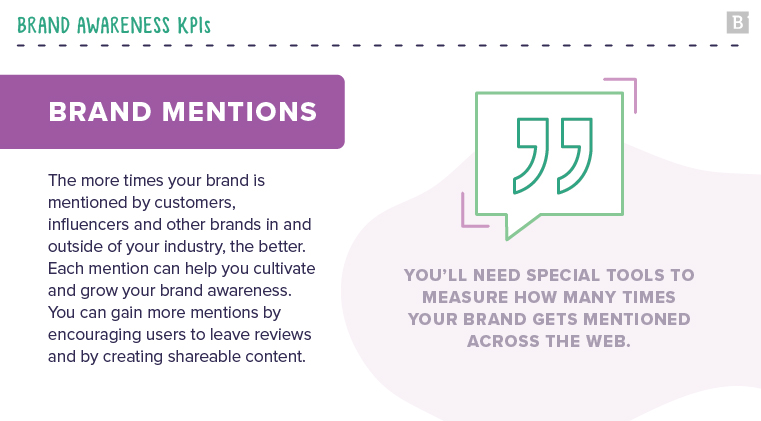
Media mentions
We won’t go so far as to say that all press is good press (I mean, come on.), but positive media mentions are as good as gold for your brand awareness. They not only increase your visibility but also enhance your credibility.
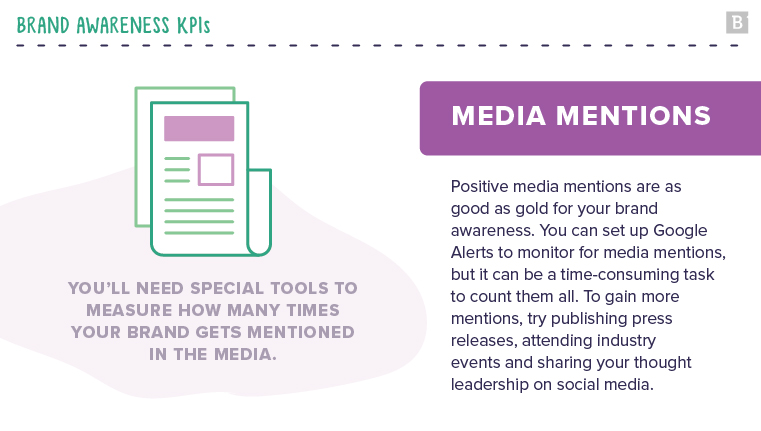
KPIs are measurable values related to the efforts made as part of your marketing campaigns and strategy.
Content KPIs
Okay, here’s where things get good. For many marketers, content represents a cornerstone of their strategies — the Content Marketing Institute found that 88 percent of marketers had integrated content into their overall approaches. At the same time, though, more than half of them admit to struggling when it comes to actually measuring whether or not content is working for their target audiences and their brands.
We’re here to change that. Here are a few important KPIs to track in connection with your content:
Time on page
This one’s applicable for nearly any kind of content out there but is especially relevant for search-engine optimized (SEO) blogs. Readers who are truly engaged and are finding value in your content will spend longer on the page. But don’t get discouraged if this KPI is shorter than expected — readers usually spend only 37 seconds reading an article. But things like subheadings, gifs, graphics, bulleted lists and other elements can help break up content and keep your readers’ attention.
Enhancing time on page is a key content marketing KPI that indicates strong engagement and can lead to higher conversion rates.
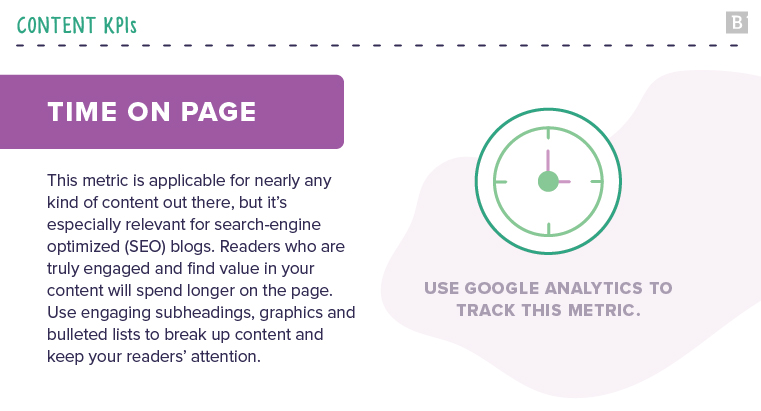
Page views
Combined with the above metric, page views help you determine if your content is engaging. B2B marketing and B2C businesses may have different expectations when it comes to this metric. For example, e-commerce sites may get more page views as shoppers look at different products. Analyzing page views is crucial for understanding website traffic patterns and optimizing your digital marketing strategy accordingly. Meanwhile, a service company may only have a handful of high-value landing pages.
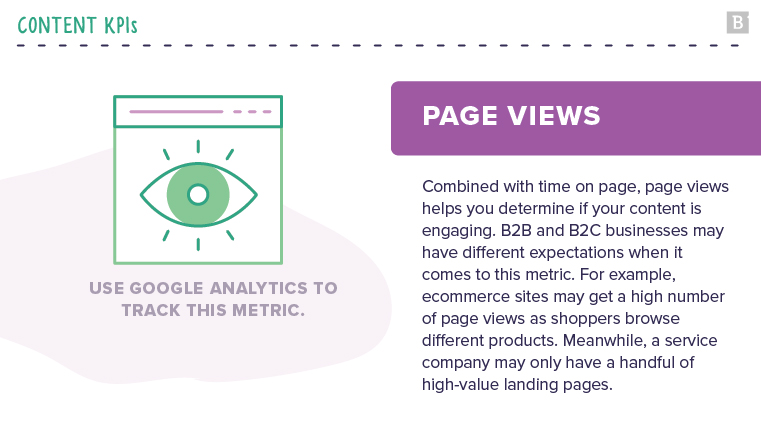
Traffic acquisition channels
Where are your site visitors coming from? Organic traffic is supported by search engine optimization (SEO) efforts that help your content rank highly on search engine results pages (SERPs). Organic traffic can also come from referral channels such as social media pages. Meanwhile, pay-per-click (PPC) advertising can increase the number of marketing qualified leads who land on your site. Refer to your web analytics to determine where your visitors are coming from so you can optimize the user flow.
Understanding your marketing channels helps you allocate your marketing investment more effectively, ensuring that you’re spending on the platforms that bring you the most success.
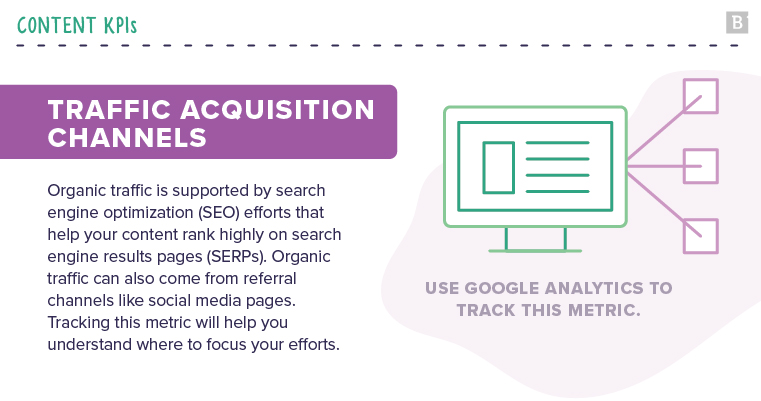
Number of subscribers
Again, this can be applicable for all different types of content but is particularly telling for newsletters and podcasts. New subscribers — especially at a steady rate over time — signal that you’re doing something right: People are engaged and are appreciating what you’re putting out there. Growing your subscriber base is a positive indicator of marketing success and can increase customer lifetime value.
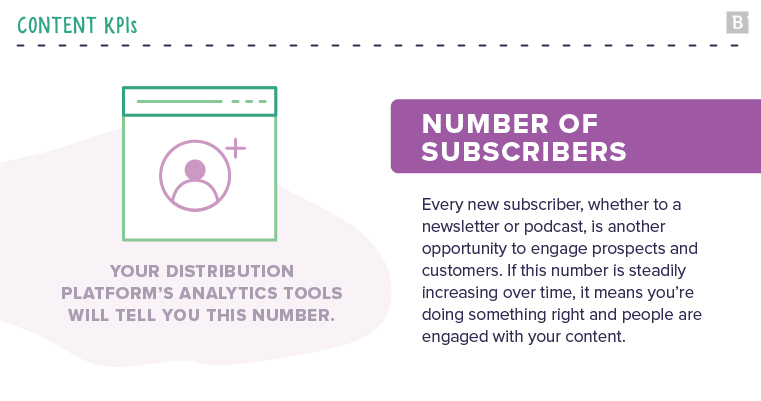
Social engagement
Any time content is shared — especially by influencers — it’s a good sign. Social engagement metrics such as likes, shares and comments indicate that your content is resonating with your audience.
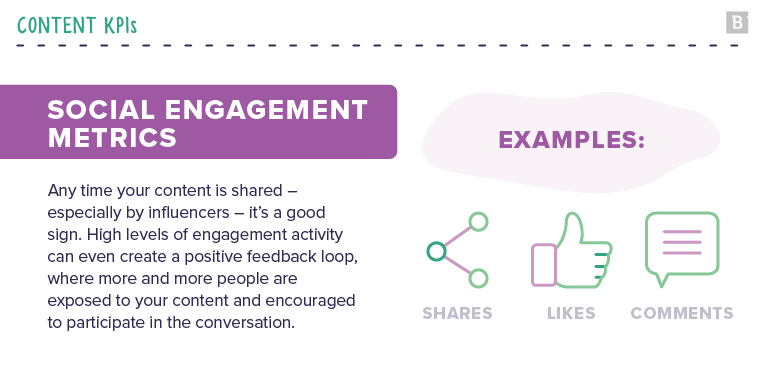
Email marketing KPIs
Among digital marketing channels, email is one of the best for attracting potential customers to your website. Calculating your return on investment is fairly straightforward. All you need to do is subtract your spend from your gain and divide that number by the total amount spent. So, if you spend $100 and gain $125 dollars, your ROI would be 25%.
Testing and implementing email templates can help you get consistent results from your campaigns. As you grow your email lists, you can attract returning website visitors and, over the long term, lower your average cost per acquisition. Effectively implementing email marketing KPIs can significantly enhance your digital marketing KPIs overall.
Return on investment can only tell you so much, though. For more actionable insights, consider tracking:
Open rate
This is the number of people who open your email messages. A low open rate usually indicates that your email subject lines aren’t engaging enough. Consider A/B testing a few options to determine which subject line resonates with your audience.
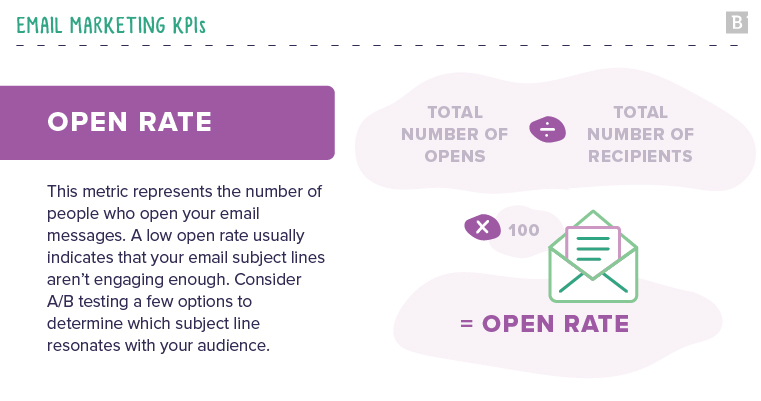
Click-through rate (CTR)
This is one of the most important email marketing metrics. Getting people out of their inboxes and onto your website is the primary goal of any email marketing campaign. Use engaging body copy and calls to action to entice more clicks.
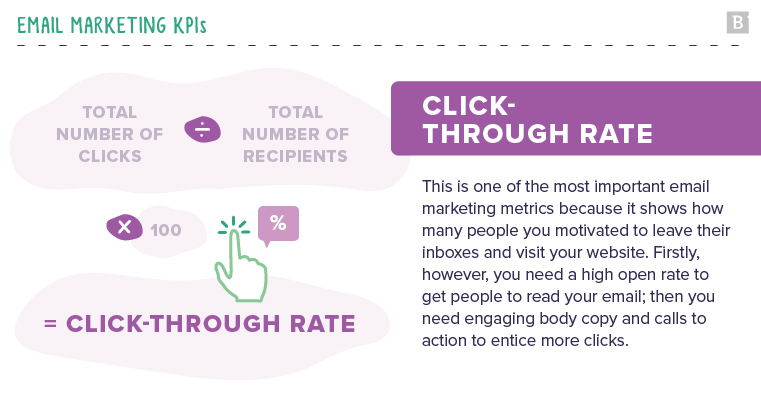
Unsubscribe rate
Marketers are required by law to include an easy way to unsubscribe from marketing messages. If your unsubscribe rate gets too high, you may need to reconsider the cadence with which you message your audience. Monitoring this KPI helps ensure that your marketing channels are not turning away potential customers.
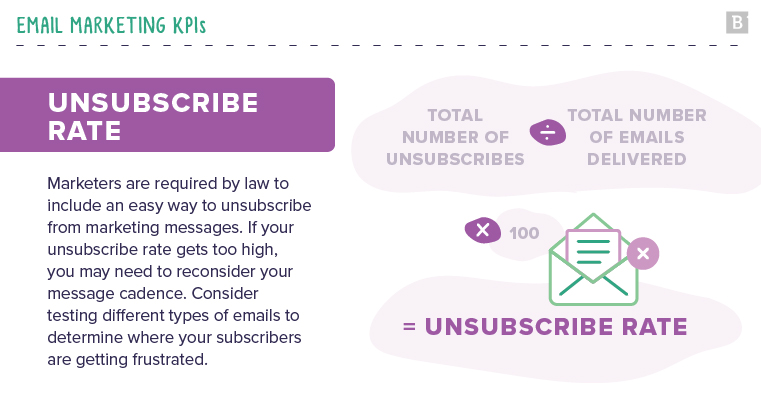
Lead generation
Connecting your customer relationship management (CRM) solution to your email marketing platform will enable you to determine which leads come from this channel. The number of leads you can gain from an email marketing campaign will depend on your industry and your audience. If you’re focused on sales growth, this is one metric you can’t afford to ignore. Effective lead generation through email marketing can significantly contribute to your marketing goals and overall business success.
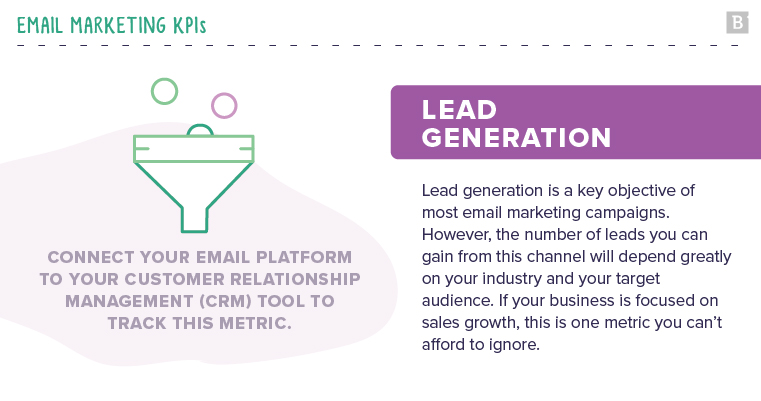
Customer satisfaction KPIs
While all of the above-discussed KPIs are important, we’ve saved one of the most important — and, surprisingly, most overlooked — for last: customer satisfaction.
We get it — it isn’t easy to accurately gauge the overall satisfaction of your customer base. But, putting aside the challenges, this is something that you absolutely must look to measure. Satisfied customers are loyal customers, and loyal customers can expand your awareness and audience through social shares, word-of-mouth recommendations and more.
Here are a few KPIs you can consider for customer satisfaction:
Net promoter score
This KPI shows how likely customers are to recommend your brand to others. And while it surely costs your brand to acquire these promoters (see cost per lead), achieving unsolicited recommendations from your most satisfied customers is a true testament to your overall marketing efforts. What’s more, measuring doesn’t have to be difficult — a simple survey will do the trick.
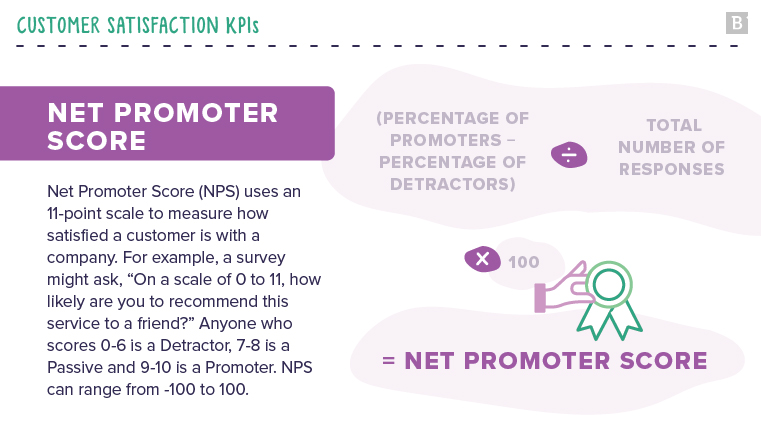
Customer retention
Repeat purchases are a great indicator of customer satisfaction. After all, in the current landscape, it sure isn’t difficult for unsatisfied shoppers to seek out your competitors. The efforts you put into marketing and nurturing will pay off as evidenced by your customer retention rates and increasing customer lifetime value.
Focusing on customer retention as a KPI ensures that your marketing spend is not only attracting new customers but also keeping existing ones, maximizing your marketing investment.
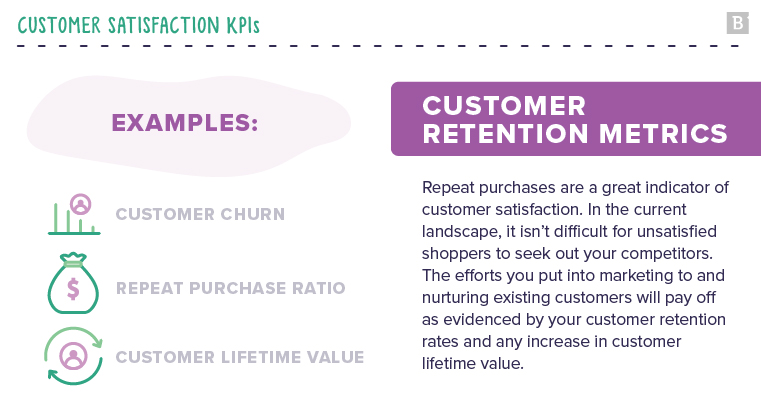
Numbers and analytics are all over the place today, and it can be easy to get caught up in all the different benchmarks and indicators marketers are now able to track. Drilling down in terms of organic search, brand awareness, content and customer satisfaction can help you track the KPIs that will provide the most insights for your strategy, while keeping you from drowning in the high tide of available data.

Are there any other KPIs that you find particularly helpful? Let us know below!
Editor’s note: Updated March 2025.
www.brafton.com (Article Sourced Website)
#Kpi #Marketing #Top #Marketing #KPI #Examples #Brafton
